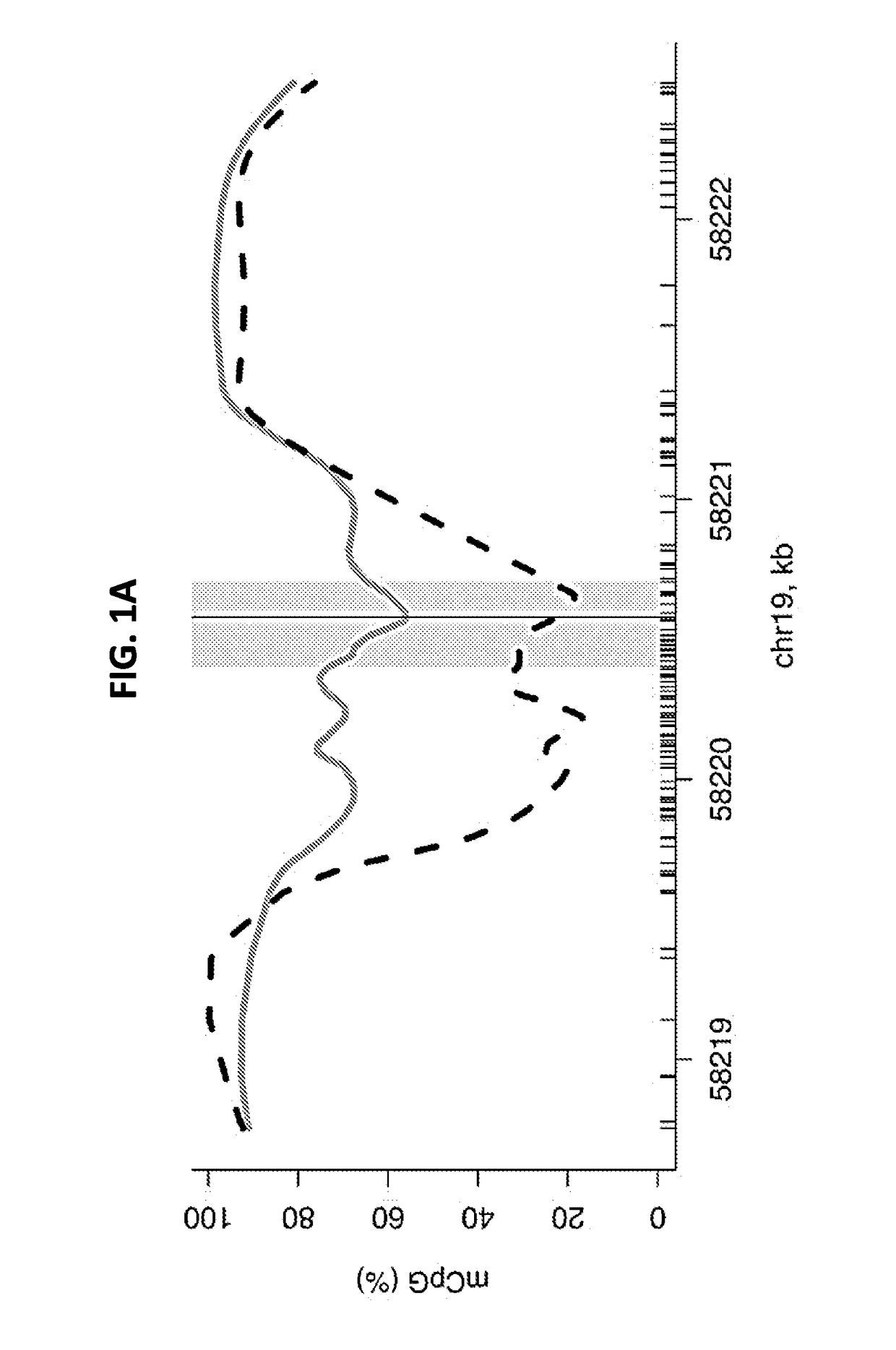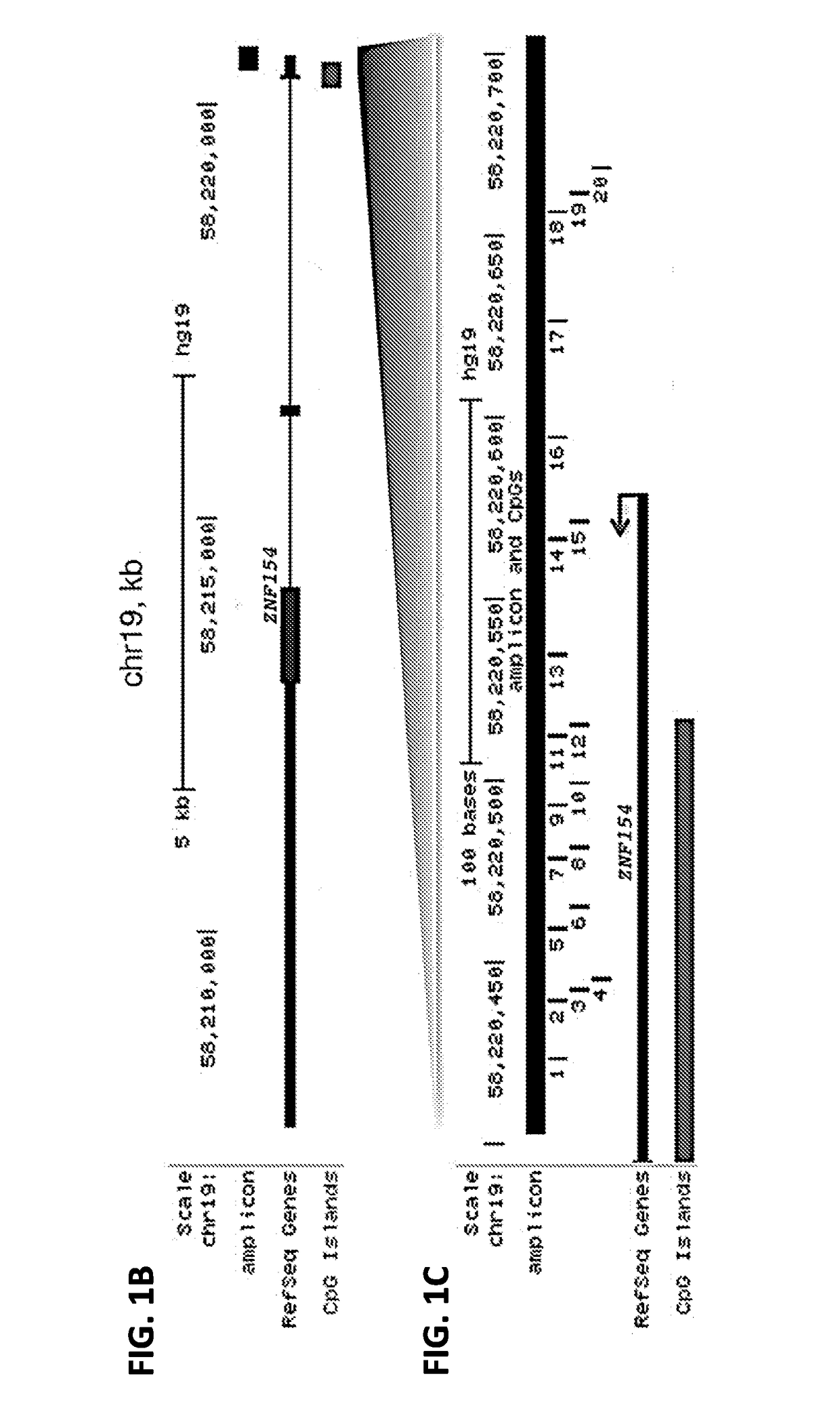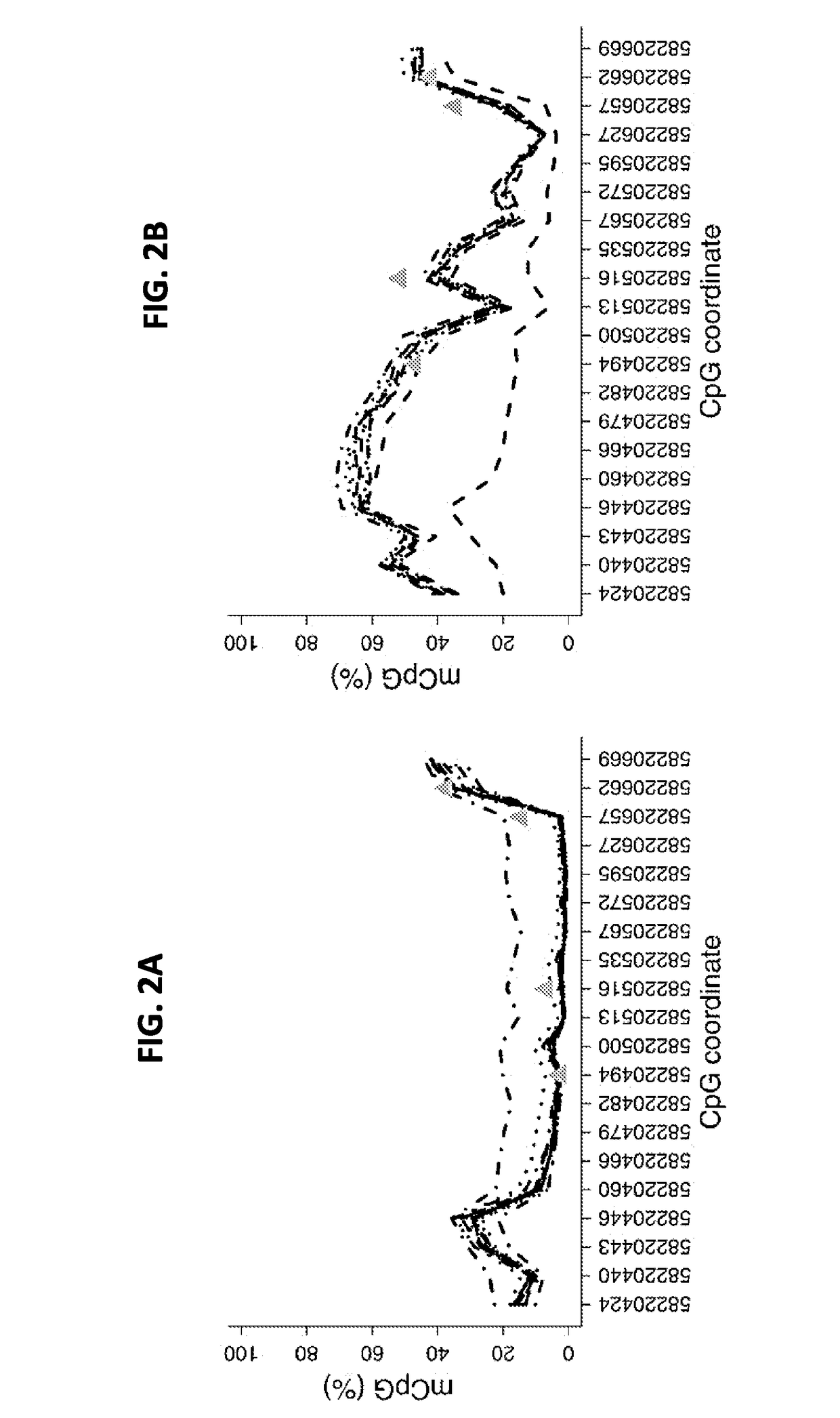Cancer detection methods
a cancer and detection method technology, applied in the field of methods and processes, can solve the problems of limited computer-readable media, significant deviations, and inability to be implemented into clinical diagnostics, and achieve the effect of increasing the methylation of cpg dinucleotides and diagnosing and/or prognosing an individual with cancer
- Summary
- Abstract
- Description
- Claims
- Application Information
AI Technical Summary
Benefits of technology
Problems solved by technology
Method used
Image
Examples
example 1
Sample Preparation and Analysis
[0178]This example describes the sample preparation and analysis techniques used in Examples 2-6.
[0179]GM12878 and K562 cell lines. GM12878 and K562 cell lines were used to extract genomic DNA and do serial dilution for technical and biological replicates. GM12878 is a lymphoblastoid cell line. This cell line has a relatively normal karyotype and low DNA methylation level. Cells were obtained from the Coriell Institute for Medical Research [coriell.org] (Catalog ID GM12878). K562 is an immortalized cell line from chronic myelogenous leukemia (CML) sample. It has high methylation level compared to the normal cell line. K562 cells were obtained from the America Type Culture Collection (ATCC) [atcc.org] (ATCC Number CCL-243).
[0180]Sample Preparation for GM12878 and K562 cell lines. Harvesting genomic DNA from GM12878 cells and K562 cells was done in triplicate and genomic DNA from each replicate was serially diluted: 100 ng, 50 ng, and 20 ng. Each dilutio...
example 2
Validation of Reproducibility for Bisulfite Amplicon Sequencing Using Cell Line DNA
[0218]The harsh conditions imposed by bisulfite treatment fragment and damage DNA molecules. It was therefore sought to assess the technical variability of DNA methylation in PCR amplification products potentially affected by a limited sampling of variability among DNA molecules at very low concentration levels.
[0219]For this analysis, three dilutions of genomic DNA each from K562 and GM12878 cell lines were sampled at 20 ng, 50 ng, and 100 ng in duplicate from three replicate culture flasks, thus yielding 18 samples per cell line. Amplicon products for each sample were generated, barcodes added and sequenced on the ILLUMINA MISEQ platform. The analysis consisted of aligning sequence reads to a converted genomic reference sequence at the target locus (hg19, chr19:58220404-58220705) using Bismark. For GM12878, 16 out of 18 samples yielded aligned reads, between 1,276 to 120,500 reads at the amplicon lo...
example 3
Bisulfite Amplicon Sequencing in Solid Tumor Gynecological Samples
[0222]Bisulfite amplicon sequencing was used to investigate methylation levels at the ZNF154 locus in genomic DNA extracted from 2 endometrial normal samples and 41 endometrial solid tumors comprising a collection of 19 endometroid tumors, 11 serous tumors and 11 clear-cell tumors.
[0223]Each sample was assessed in a single copy and only those with 1000 aligned reads were considered (excluding one low-grade EEC sample with 402 aligned reads). Averaging signal across the amplicon, tumors display a 66% increase in median methylation levels relative to normal tissue (P=2×10−5, Wilcoxon rank sum test, FIG. 3A). All tumor stages were hypermethylated relative to normal tissue (P≤0.01, t-test). Stage IV tumors (one serous and one clear cell sample) were hypermethylated relative to each of the lower stages (P≤0.05, t-test) (FIG. 10); however, no significant methylation differences were observed among endometrioid, serous, and ...
PUM
| Property | Measurement | Unit |
|---|---|---|
| Ratio | aaaaa | aaaaa |
| Frequency | aaaaa | aaaaa |
| Threshold limit | aaaaa | aaaaa |
Abstract
Description
Claims
Application Information
 Login to View More
Login to View More - R&D
- Intellectual Property
- Life Sciences
- Materials
- Tech Scout
- Unparalleled Data Quality
- Higher Quality Content
- 60% Fewer Hallucinations
Browse by: Latest US Patents, China's latest patents, Technical Efficacy Thesaurus, Application Domain, Technology Topic, Popular Technical Reports.
© 2025 PatSnap. All rights reserved.Legal|Privacy policy|Modern Slavery Act Transparency Statement|Sitemap|About US| Contact US: help@patsnap.com



